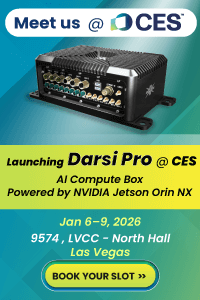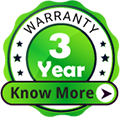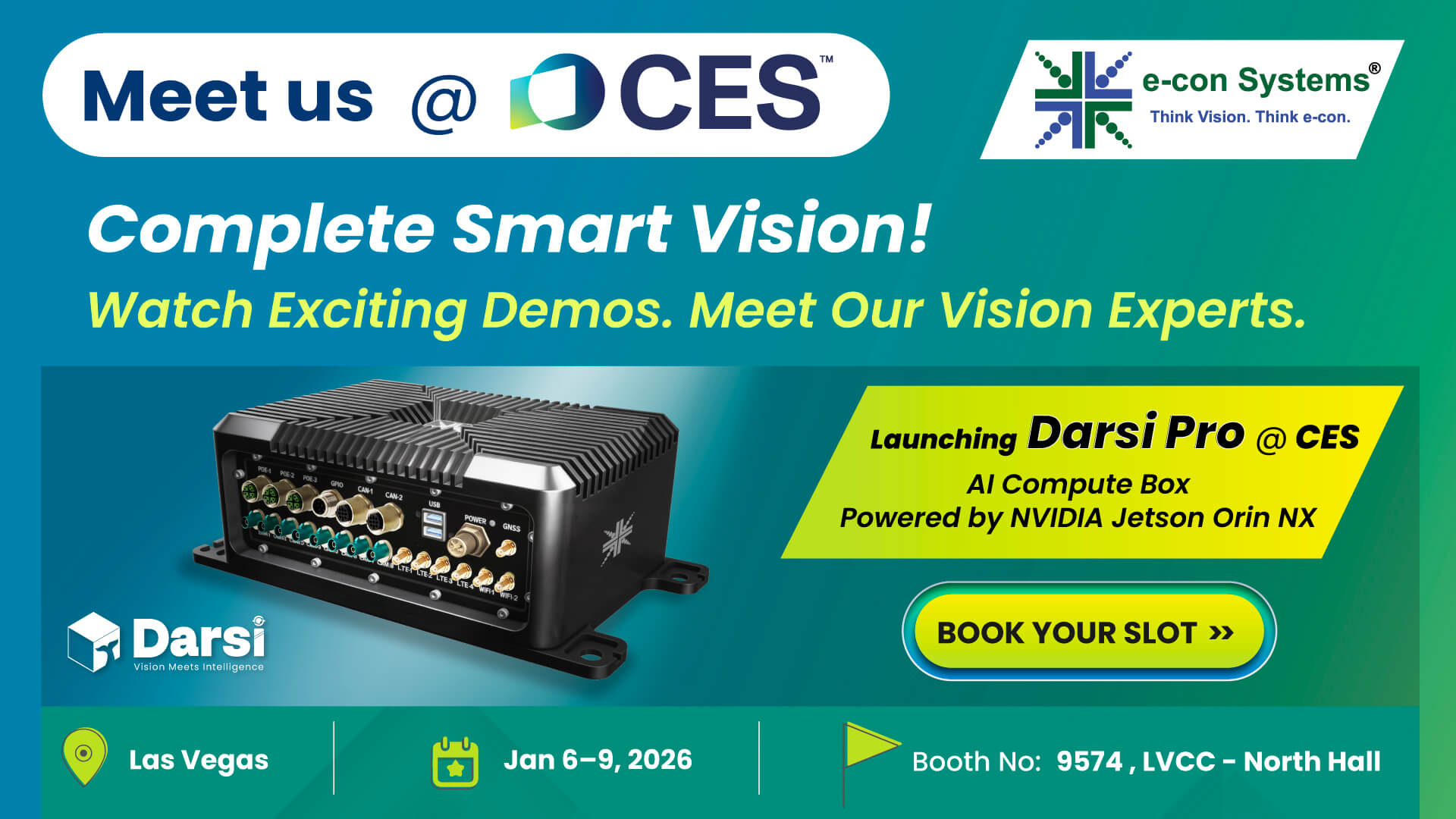Frequently asked questions (FAQ)
- DepthVista Time-of-Flight camera - Specification and Performance
- 1. What is DepthVista?
- 2. What are the key features of the DepthVista camera?
- 3. What's the depth resolution and frame rate supported by DepthVista?
- 4. What's the light source used in this camera?
- 5. What are NIR wavelength supported by DepthVista?
- 6. Does this camera require any ambient lighting for depth measurement?
- 7. What's the depth range supported by the DepthVista camera?
- 8. What's the maximum accuracy that can be achieved?
- 9. Can the depth range be improved further?
- 10. Does this camera use onboard image processing for depth measurement?
- 11. Is DepthVista camera suitable for both indoor and outdoor environments?
- ToF + RGB Sensor
- 12. Does the DepthVista camera provide RGB data as well along with the 3D data?
- 13. What is the purpose of obtaining an RGB image in a 3D camera?
- 14. Are these ToF and RGB sensors synchronized?
- 15. I don't need the RGB sensor that comes out of the box with this camera. Is it possible to get the camera without it?
- 16. Does the DepthVista camera provide point cloud data as well?
- Interface, Host support, and Software
- 17. What are the interfaces supported by DepthVista?
- 18. What is the maximum length supported with DepthVista GMSL2 variant?
- 19. What are the platforms supported by DepthVista?
- 20. What's the software provided along with this camera?
- 21. What are the operating systems supported for this DepthVista camera?
- 22. Are there any post processing filters supported with this software?
- 23. Can this 3D camera be used with ROS for robotics?
- Enclosure
- 24. Does the 3D camera come with an enclosure?
- 25. Does this depth camera come with an IP67-rated enclosure?
- 26. I don't need an enclosure for this camera as I want to integrate it with the enclosure I designed on my own. So, is it possible to get this camera without the enclosure?
DepthVista Time-of-Flight camera - Specification and Performance
1. What is DepthVista?
DepthVista is a series of 3D cameras from e-con Systems that operates using the pulsed indirect Time-of-Flight technology. These cameras are targeted at embedded vision applications that require accurate depth measurements such as autonomous mobile robots and autonomous guided vehicles.
2. What are the key features of the DepthVista camera?
Some of the key features of the DepthVista camera are as follows:
- Operates in NIR range of either 940nm / 850nm for both indoor and outdoor environments.
- Offers an accuracy of <1%.
- Comes with two operational modes - the far mode (1000 mm to 6500 mm) and the near mode (200 mm to 1200 mm).
- Ready-to-integrate with Robot Operating System2 (ROS2)/ NVIDIA's Isaac™ ROS.
- Supports NVIDIA® platforms including Jetson Orin™ and Xavier™.
3. What's the depth resolution and frame rate supported by DepthVista?
This time of flight camera supports a resolution of 640x480 at a frame rate of 30 fps for depth measurement. This meets the resolution and frame rate requirements of majority of the embedded vision applications that need depth-sensing - such as autonomous mobile robots, autonomous tractors, people counting systems, remote patient monitoring systems, etc.
4. What's the light source used in this camera?
The DepthVista camera uses 2 VCSEL laser diodes that work in the Near InfraRed (NIR) spectrum (940nm/850nm) and is safe for human eyes. Hence DepthVista doesn't cause any health threat in places like warehouses, retail stores, hotels, etc.
5. What are NIR wavelength supported by DepthVista?
The NIR wavelength supported by DepthVista are 850nm (for indoor use case) and 940nm (for outdoor use case).
6. Does this camera require any ambient lighting for depth measurement?
As the VCSEL LEDs work in the NIR range, this camera doesn't require any ambient light for optimal performance. It is capable of producing accurate depth images even in absolute darkness. This makes DepthVista suitable for use in low light environments or even in absolute darkness.
7. What's the depth range supported by the DepthVista camera?
DepthVista comes in two modes - the far mode and the near mode. The far mode supports depth measurement between 1 and 6 meters while the near mode can capture depth data from 20 cm to 1.2 meters.
8. What's the maximum accuracy that can be achieved?
DepthVista is designed for high precision to ensure autonomous and guided vehicles are able to safely navigate in their environments. The camera offers an accuracy of < 1%, which is one of the best in the industry.
9. Can the depth range be improved further?
Yes. Depth range can be improved by changing the no of VCSEL LEDs and their intensity. This is going to involve a customization effort. For any help with customizing this ToF camera, please write to us at camerasolutions@e‑consystems.com. You could also visit the camera customization page to learn more about the customization services we offer.
10. Does this camera use onboard image processing for depth measurement?
Yes. This camera delivers precise 3D depth imaging in real time leveraging onboard image processing. Unlike traditional stereo cameras, this reduces the computational load on the host side, making more processing power available for other activities. This enables product developers to build a more efficient embedded vision device.
11. Is DepthVista camera suitable for both indoor and outdoor environments?
Yes. As the VCSEL laser diodes used in this camera operate in both 850nm and 940nm NIR ranges, this camera is suitable for both indoor and outdoor environments.
ToF + RGB Sensor
12. Does the DepthVista camera provide RGB data as well along with the 3D data?
Yes. The DepthVista_USB_RGBIRD camera comes integrated with a Full HD RGB sensor along with the ToF sensor. Both the 3D depth and RGB images are delivered in a single frame over the USB interface.
13. What is the purpose of obtaining an RGB image in a 3D camera?
A 3D depth camera captures depth data to form either a depth map or a point cloud. However, if you wish to recognize objects in the scene (of which you are measuring depth), the camera should be capable of capturing RGB data as well. For instance, in a people counting system, along with measuring the distance at which people are standing in a scene, you also need to count the number of humans in it.
To learn more about why RGB data is required in depth cameras and why it is important for certain embedded vision applications, please visit the article Advantages of having RGB and depth data in a single time of flight camera.
14. Are these ToF and RGB sensors synchronized?
Yes. Both these sensors work synchronously to make the best use of the depth and RGB data streams.
15. I don't need the RGB sensor that comes out of the box with this camera. Is it possible to get the camera without it?
Yes. We have DepthVista_MIPI_IRD (upcoming product) and DepthVista_GMSL_IRD (upcoming product) cameras which are designed to have only the ToF sensor.
16. Does the DepthVista camera provide point cloud data as well?
DepthVista provides depth data, RGB data (only in DepthVista_USB_RGBIRD) and IR data in a single frame. Point cloud and disparity map can be produced on the host platform using these inputs.
Interface, Host support, and Software
17. What are the interfaces supported by DepthVista?
Currently e-con Systems developed the DepthVista with interface support like USB and MIPI. And the DepthVista with GMSL interface is getting ready for its launch. For any other interface support/customization, please write to us at camerasolutions@e‑consystems.com.
18. What is the maximum length supported with DepthVista GMSL2 variant?
The DepthVista camera with GMSL SerDes technology enables the long distance transmission up to a distance of 15m.
19. What are the platforms supported by DepthVista?
The DepthVista camera is designed to support NVIDIA® platforms including Jetson Orin™ and Xavier™.
20. What's the software provided along with this camera?
e-con Systems provides the ToFCam SDK with a sample application for easy setup and integration of DepthVista. This SDK allows you to develop your own 3D applications easily.
21. What are the operating systems supported for this DepthVista camera?
The operating systems supported for this DepthVista camera are listed below:
- Linux for Tegra® (L4T) for NVIDIA® Jetson platforms
- Windows 10 and Ubuntu 18.04 for x86 systems
22. Are there any post processing filters supported with this software?
Yes. DepthVista supports the following post processing filters.
- Temporal filter
- Planarization filter
- Smoothening filter
- Edge detection filter
23. Can this 3D camera be used with ROS for robotics?
Yes. The DepthVista 3D camera can be interfaced with ROS for robot applications. For this, e-con Systems has developed the Open Source sample application based on V4L2. This rqt_cam application supports both the ROS Kinetic (Ubuntu 16.04) and ROS Melodic (Ubuntu 18.04) distributions. For more details on how to integrate e-con cameras with ROS, please visit the article Interfacing e-con Cameras with ROS.
Enclosure
24. Does the 3D camera come with an enclosure?
Yes. The DepthVista camera comes with a metal enclosure.
25. Does this depth camera come with an IP67-rated enclosure?
The DepthVista camera with GMSL interface is getting ready for its launch. This variant comes with an IP67-rated enclosure.
26. I don't need an enclosure for this camera as I want to integrate it with the enclosure I designed on my own. So, is it possible to get this camera without the enclosure?
Yes. It's possible to get this camera without the enclosure and it will be a custom solution. However, it is to be noted that the enclosure can have an impact on the camera calibration. It is very likely that re-calibration is required once it is integrated with the enclosure of your choice.



 Mr. Thomas Yoon
Mr. Thomas Yoon +82-10-5380-0313
+82-10-5380-0313







